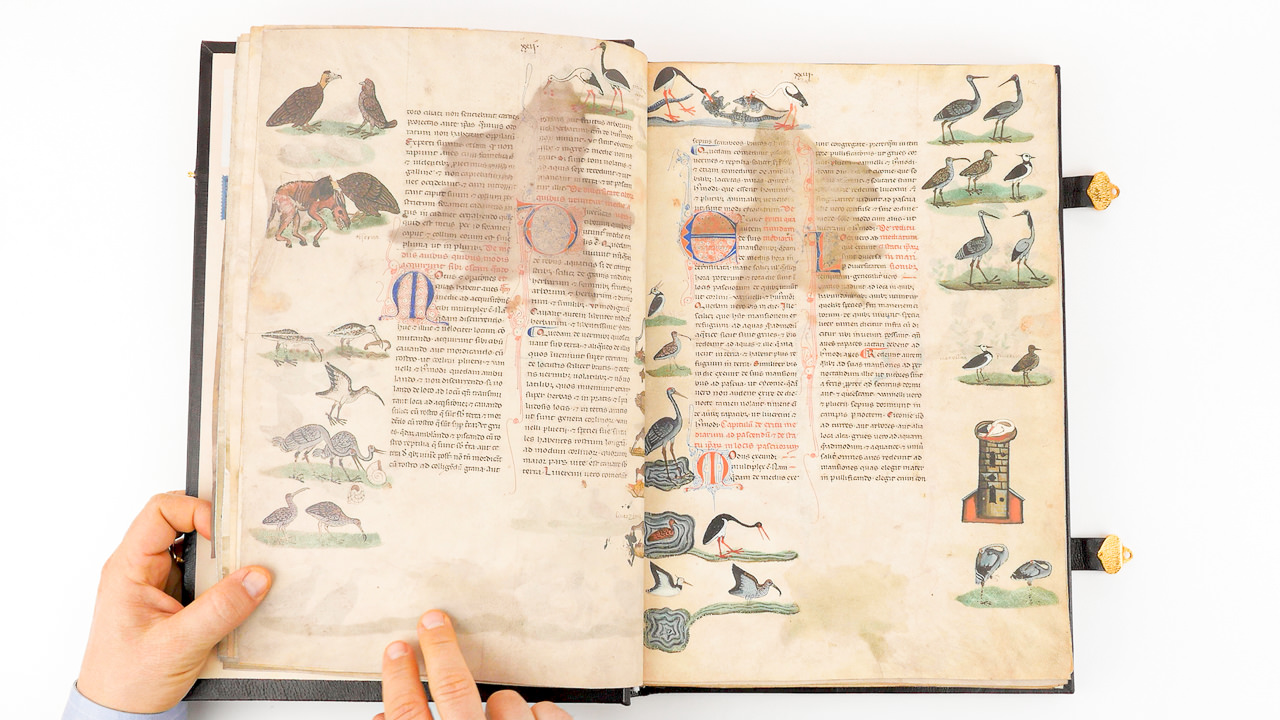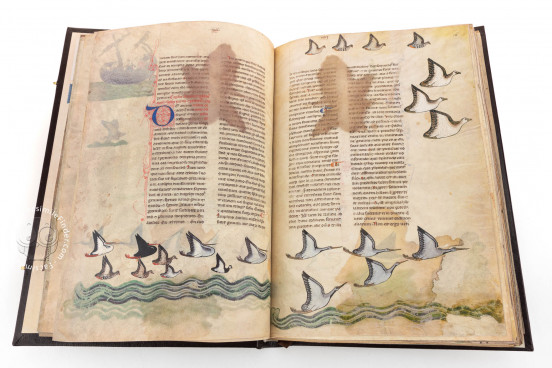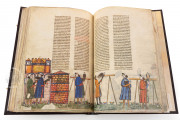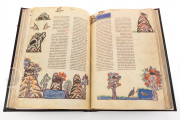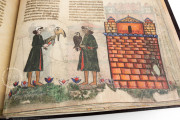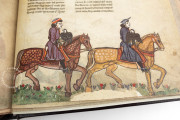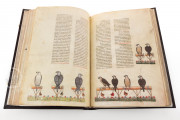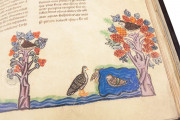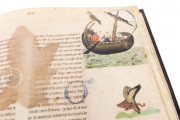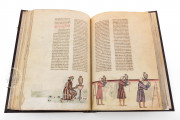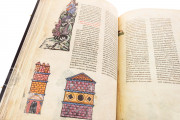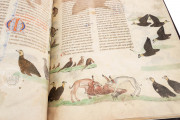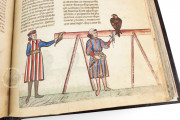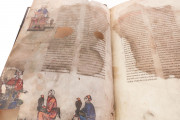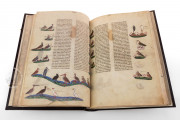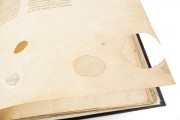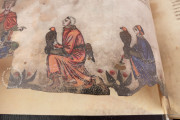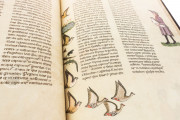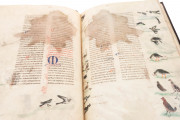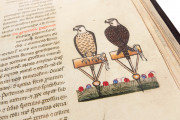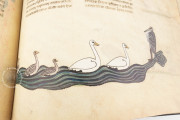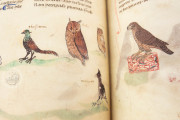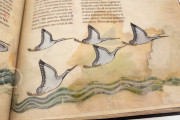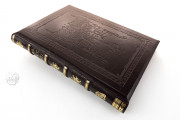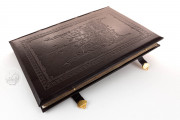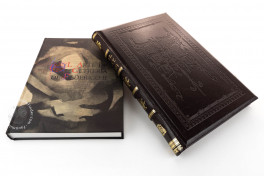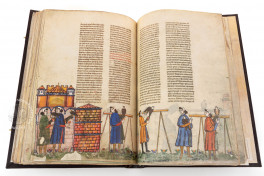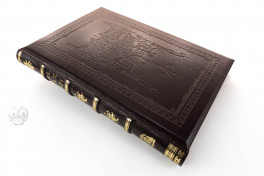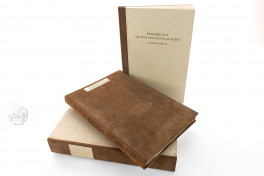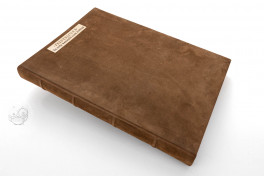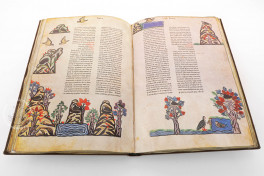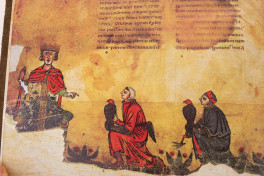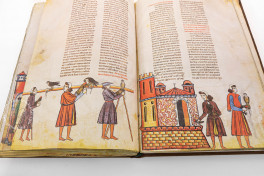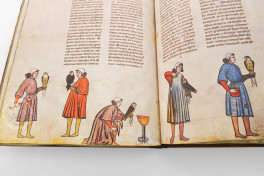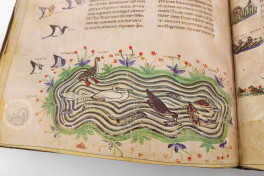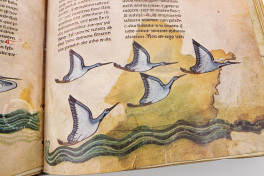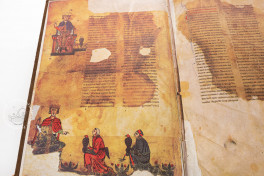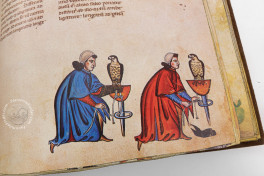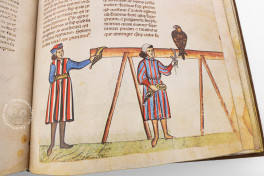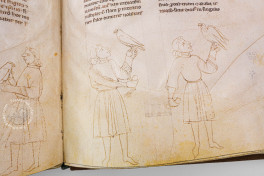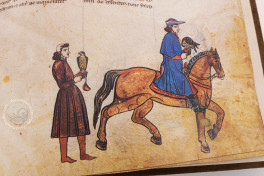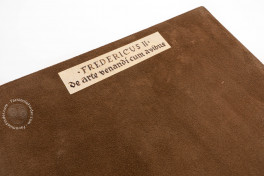Hunting, particularly falconry, was a distinguished practice of the courtly elite globally across the Middle Ages. In addition to indicating noble status, hunting was also the subject of study and scientific inquiry. Coupling texts and direct observation, Emperor Frederick II contends that he spent thirty years compiling the famed treatise on ornithology and falconry On the Art of Hunting with Birds.
The work drew widely on a variety of sources, such as Aristotelian zoological texts and works by expert Arabic-speaking falconers, in addition to relying heavily on close observation. Completed sometime in the 1240s, Frederick II dedicated this text to his (illegitimate) son Manfred. The textual tradition of the work was vast, and the oldest of seven Latin versions is at the Vatican.
The manuscript Pal. lat. 1071 is generally accepted as a commission from Manfred himself and is dated between 1258 and 1266. The manuscript is the two-book version of the text, meaning that it contains the first two of the six sections of the monumental treatise. Albeit abridged, the book's generous margins host over 900 images of birds, in addition to 170 human figures and twelve representations of horses. Showcasing magnificent vivid colors and masterful artistry, the manuscript is a highlight of thirteenth-century illumination.
Ea que sunt, sicut sunt
While the treatise draws from a wealth of established knowledge – most notably the falconer known in Latin as Moamym – Frederick II takes care to emphasize that his own experiments and observations were used to demonstrate and discuss the things that are exactly as they are ("ea que sunt, sicut sunt"). In addition to closely observing birds and their habits, he claims that he regularly invited Arab falconers to his court to learn from them directly.
The scrutiny used in this study translates into the images themselves, the most breathtaking of which capture birds in flight or detail their plumage. Illustrations were planned practically for every page of the ambitious manuscript, but the book was never finished. Beginning on fol. 94r, some of the images are drawn but not painted. Nevertheless, these preparatory drawings showcase the skill of the artists at work.
Written in an Italian Rotunda
The fine southern Italian Rotunda securely ties the manuscript to southern Italy. Exquisite initials in red and blue with complementary pen flourishing initiate each section of the extremely abbreviated Latin text written across two columns.
Addidit Rex
This manuscript is also notable for containing additions made by Manfred, which are clearly marked in the beginning by notations reading "Rex", "Rex Manfredus", or "addidit Rex". The images on fol. 1v depicts not only the author Emperor Frederick II, but also King Manfred, both enthroned and regally dressed.
Manfred was crowned in Palermo in 1258 and died in 1266, thus giving us the probable time span in which the book was created. In the early fourteenth century, the book was in the hands of Jean II de Dampierre, who used it to make a French translation of the text, which would endure as an authoritative work of ornithology for centuries to come.
We have 3 facsimiles of the manuscript "Art of Hunting With Birds":
- Arte de Cetrería de Federico II facsimile edition published by Testimonio Compañía Editorial, 2005
- Falkenbuch Kaiser Friedrich II - De Arte Venandi Cum Avibus facsimile edition published by Akademische Druck- u. Verlagsanstalt (ADEVA), 1969
- De Arte Venandi Cum Avibus facsimile edition published by Edilan, 1978

